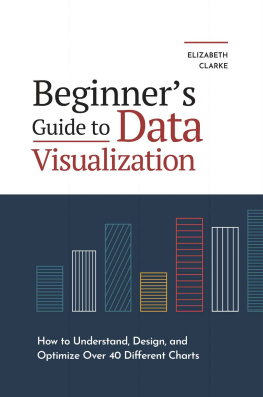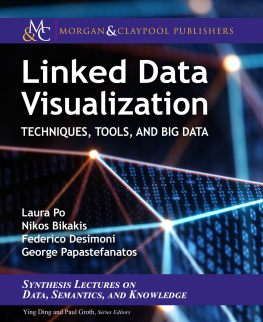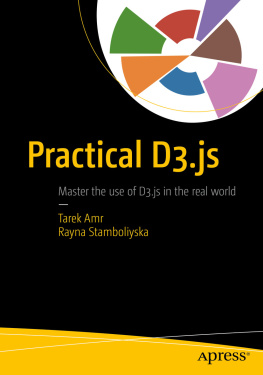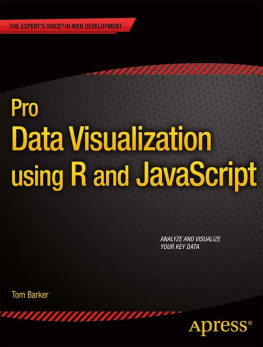Gerald Benoît - Introduction to Information Visualization: Transforming Data into Meaningful Information
Here you can read online Gerald Benoît - Introduction to Information Visualization: Transforming Data into Meaningful Information full text of the book (entire story) in english for free. Download pdf and epub, get meaning, cover and reviews about this ebook. year: 2019, publisher: Rowman & Littlefield, genre: Romance novel. Description of the work, (preface) as well as reviews are available. Best literature library LitArk.com created for fans of good reading and offers a wide selection of genres:
Romance novel
Science fiction
Adventure
Detective
Science
History
Home and family
Prose
Art
Politics
Computer
Non-fiction
Religion
Business
Children
Humor
Choose a favorite category and find really read worthwhile books. Enjoy immersion in the world of imagination, feel the emotions of the characters or learn something new for yourself, make an fascinating discovery.

- Book:Introduction to Information Visualization: Transforming Data into Meaningful Information
- Author:
- Publisher:Rowman & Littlefield
- Genre:
- Year:2019
- Rating:3 / 5
- Favourites:Add to favourites
- Your mark:
Introduction to Information Visualization: Transforming Data into Meaningful Information: summary, description and annotation
We offer to read an annotation, description, summary or preface (depends on what the author of the book "Introduction to Information Visualization: Transforming Data into Meaningful Information" wrote himself). If you haven't found the necessary information about the book — write in the comments, we will try to find it.
Introduction to Information Visualization: Transforming Data into Meaningful Information is for anyone interested in the art and science of communicating data to others. It shows readers how to transform data into something meaningful - information.
Applying information visualization in research, service, teaching, and professional life requires a solid understanding of graphic design and the aesthetic along with hands-on skills and knowledge of data principles and software. This book is applicable to students in all domains, to researchers who need to understand how to create graphics that explain their data, and to professionals and administrators for professional development training. Website Designers and Human-Computer Interaction researchers will appreciate the backstory of designing interactive visualizations for the web.
Drawing on the authors years of practice and teaching, it bridges the two worlds in ways everyone can participate in the future of information and to appreciate the beautiful in information:
- Step-by-step directions in the fundamentals of HTML5, CSS, and d3.js
- Design challenges with fully explained answers
- Web-site support for code samples (JavaScript, d3.js, python), live examples, and a place to build a community of other IV pros
- Useful for teaching design to scientists; data to the humanities
- Guidance for using the text depending on the class makeup
- Review of third-party visualization software, big data trends, and script libraries
- Guidance on how to continue in the IV world after graduation
This full-color book features graphics and a companion Web site.
The online companion site hosts living examples, updates, and errata. Youre invited to participate on the site, too, sharing your questions, solutions, and ideas. For most readings, there is a partner design lab. At the conclusion of the course, there is a complete interactive information visualization service documentation for libraries.
About the AuthorGerald Benot, Ph.D., teaches across a range of interrelated topics - information science, computer science, programming, web design, systems analysis, visual communication, and information visualization. He teaches data science courses for UC Berkeleys Data Science program. Before joining UC Berkeley, Prof. Benot was a faculty member at Simmons College for fifteen years, teaching in the information science and computer science programs. There he taught at undergraduate, graduate, and doctoral levels.
Prof. Benots background includes training in graphic arts and production, at one time art director and partner in the advertising firm Imada, Wong, Park, + Benot (continues as IW Group), and as an information scientist writing on human-computer interaction, information visualization and aesthetics, communications theory, and language models in search engine design.
Prof. Benot has been an invited lecturer at Harvard University, the University of Rhode Island, Simmons College, and elsewhere to lecture on the opportunities of visualization in business, as a service, and professional education.
Gerald Benoît: author's other books
Who wrote Introduction to Information Visualization: Transforming Data into Meaningful Information? Find out the surname, the name of the author of the book and a list of all author's works by series.








 The paper used in this publication meets the minimum requirements of American National Standard for Information SciencesPermanence of Paper for Printed Library Materials, ANSI/NISO Z39.48-1992.
The paper used in this publication meets the minimum requirements of American National Standard for Information SciencesPermanence of Paper for Printed Library Materials, ANSI/NISO Z39.48-1992.